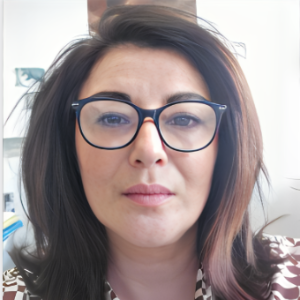Title : Synthesis and analytical control of nanodelivery lipid-based systems for encapsulation of nutraceuticals: Achievements and challenges
Abstract:
This conference aims to give an overview of an emerging challenge within the current research related to Food Science and Technology, based on the nanoencapsulation of bioactive compounds essential for human health.
Regarding this point, it is important to highlight the existence of many hydrophobic nutrients considered as nutraceutical compounds or functional foods, with great relevance for human health, such as: fat-soluble vitamins (A, D, E and K), essential oils (terpenes and terpenoids such as cardamom and cinnamon oils), essential fatty acids (omega-3), plant pigments (carotenoids, flavonoids, chlorophylls, xanthophylls and other phytosterols such as polyphenols), etc.
Despite their undeniable advantages, these bioactive principles present two serious problems with regard to their incorporation on a large scale in processed foods: their low stability during prolonged periods of storage due to physical and chemical processes of degradation against light, oxygen, high temperatures or humidity, etc., and its limited bioavailability. To overcome these two issues, a new alternative has been proposed based on the nanoencapsulation of said nutrients to protect them against inappropriate environmental circumstances, as well as to improve their bioavailability.
With this aim, different types of nanostructured organic systems (NOMs), have been developed for the encapsulation and controlled release of nutrients, the most representative being: inclusion complexes, nanogels, nanoemulsions, nanofibers, nanosponges, nanoliposomes, nanomicelles, protein nanocapsules, solids lipid nanoparticles (SLNs) and nanostructured lipid carriers (NLCs)
The design and synthesis of these nanosystems require a detailed knowledge about their composition, structure, and properties. These three factors will exert a great influence on the final physical characteristics of the nanosystem, as well as on the stability and bioavailability of the bioactive principle.
This knowledge requires the implementation of suitable analytical tools providing information on the characteristics of the nanoparticles (concentration, size, state of aggregation, surface charge, etc.) and about the physical-chemical properties of the whole system (appearance, rheology and stability) with regard to their incorporation as food ingredients.
In our specific case, two powerful bioactives, quercetin and vitamin D, have been selected attending to their beneficial properties as dietary nutraceuticals because of their antioxidant, anti-inflammatory and antidiabetic characteristics, but limited stability and bioavailability. Their encapsulation was accomplished as two different nanocarrier systems, that are nanoemulsions and nanomicelles, respectively.
An initial stage was based on the selection (nature and percentage) of the appropriate components (organic and aqueous phases, surfactant, cosurfactant, etc.), as well as their specific synthesis methodology, considering that all of them must be food GRAS (generally recognized as safe) categorized, since our field of application would be focused within food science. In all these stages, the use of different characterization techniques will be necessary: ??SEM, DLS, TEM, Raman spectroscopy, UV-Vis spectrophotometry, etc. to control the physical-chemical characteristics required to obtain a food nanocarrier (droplet size, turbidity, rheology, etc.).
Furthermore, it must be highlighted the need to develop accurate methodologies able to analyze these new designed nanoencapsulated bioactives without altering their native nanostructure, such as fluorescence assisted-nanomaterials and SERS (Surface Enhanced Raman) spectroscopies.
Audienece Take Away:
Familiarization with different nanostructured organic materials (NOMs), developed for the encapsulation and controlled release of bioactive compounds with nutraceutical activity.
Familiarization with the different synthesis methodologies to properly control size, polydispersity, stability and encapsulation efficiency.Familiarization with specific analytical techniques as suitable tools to control nanostructural and physic-chemical properties.



